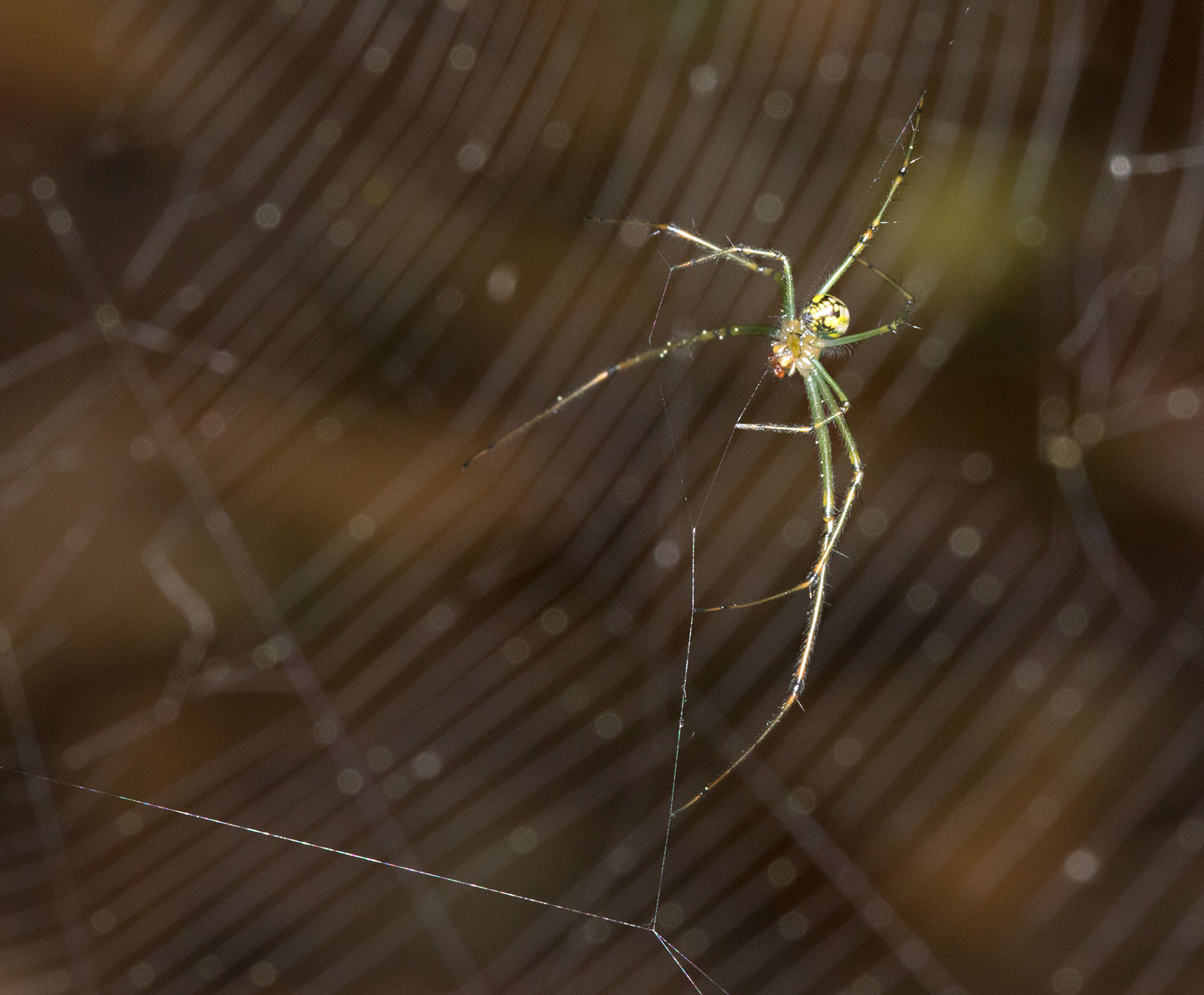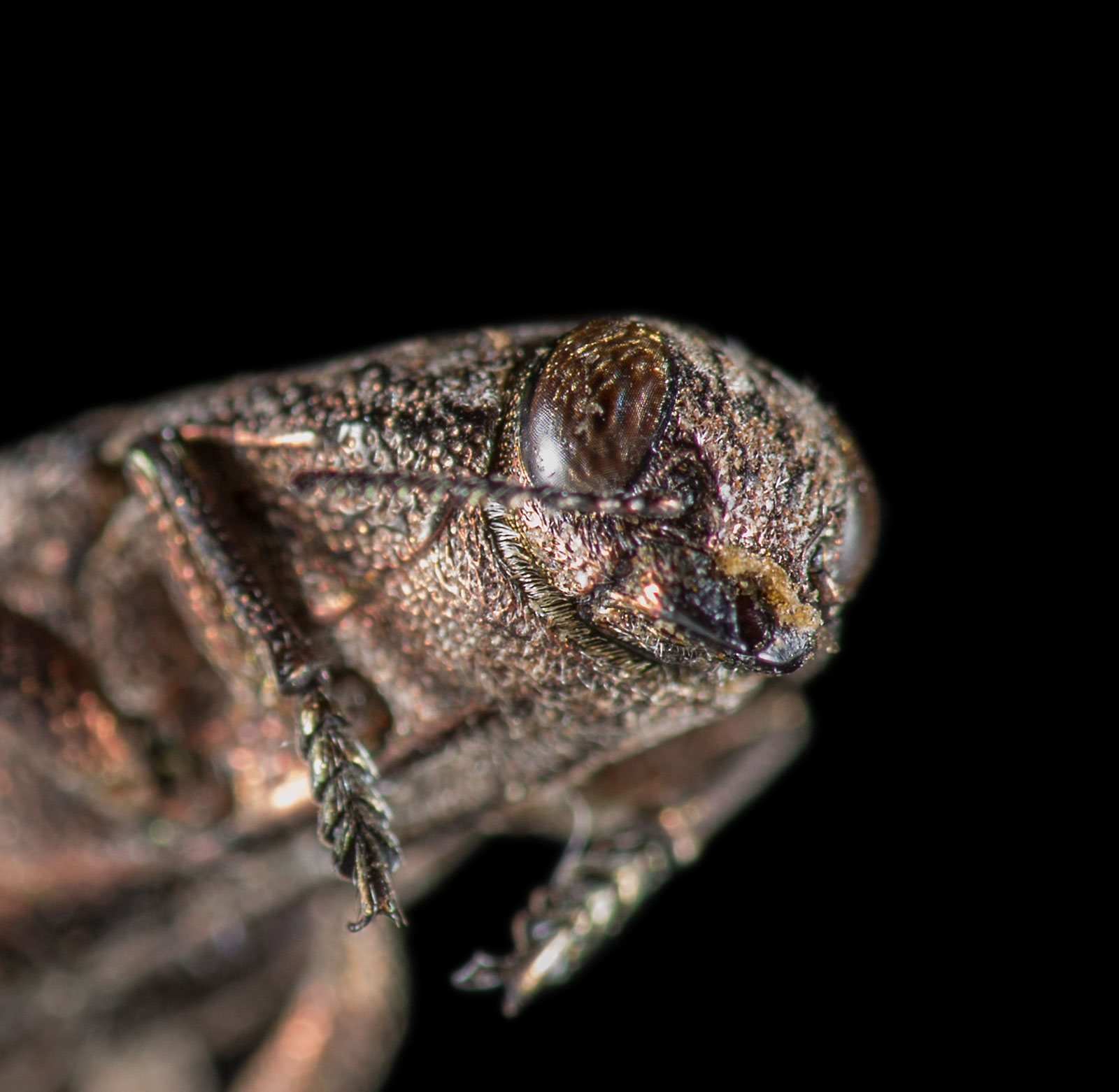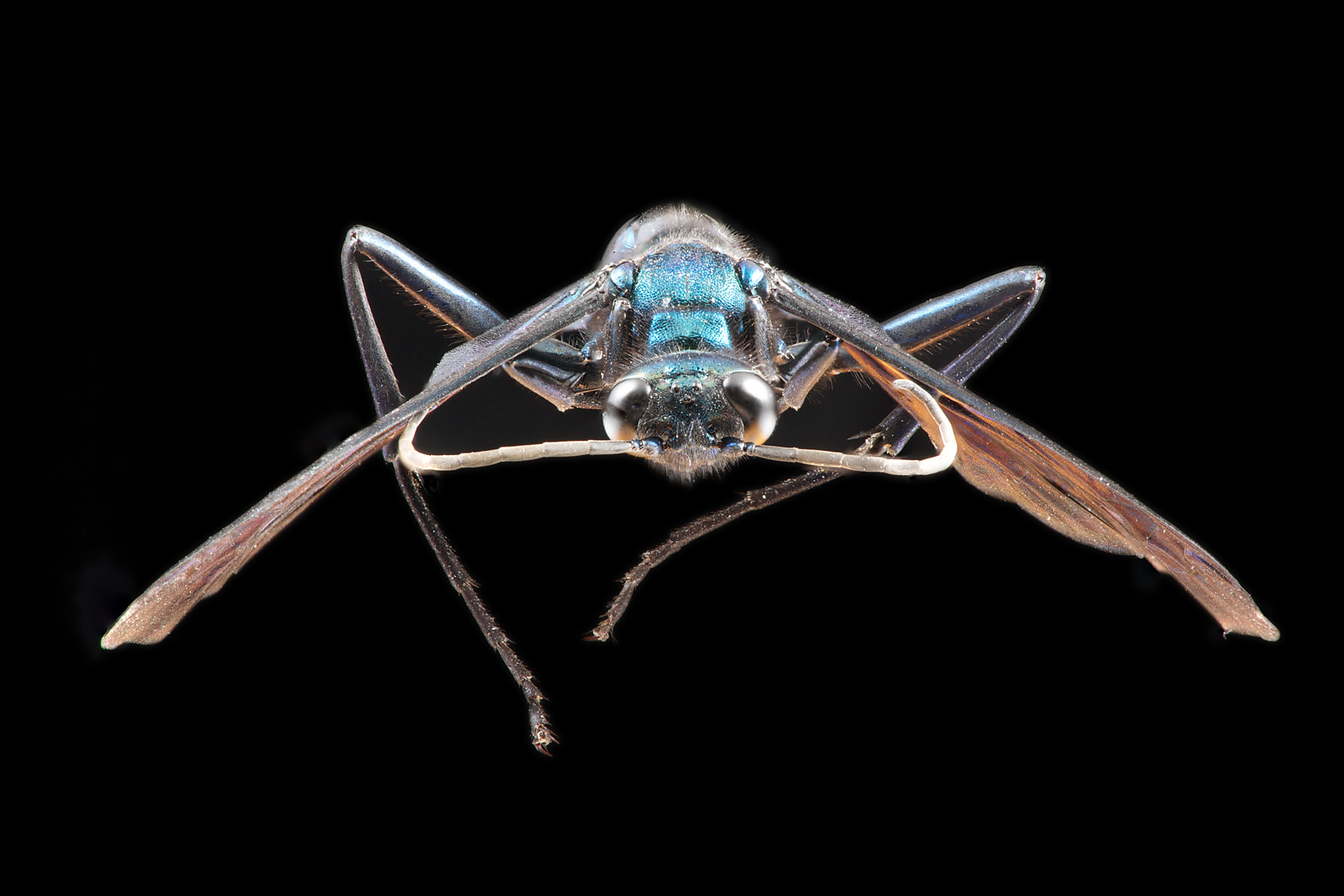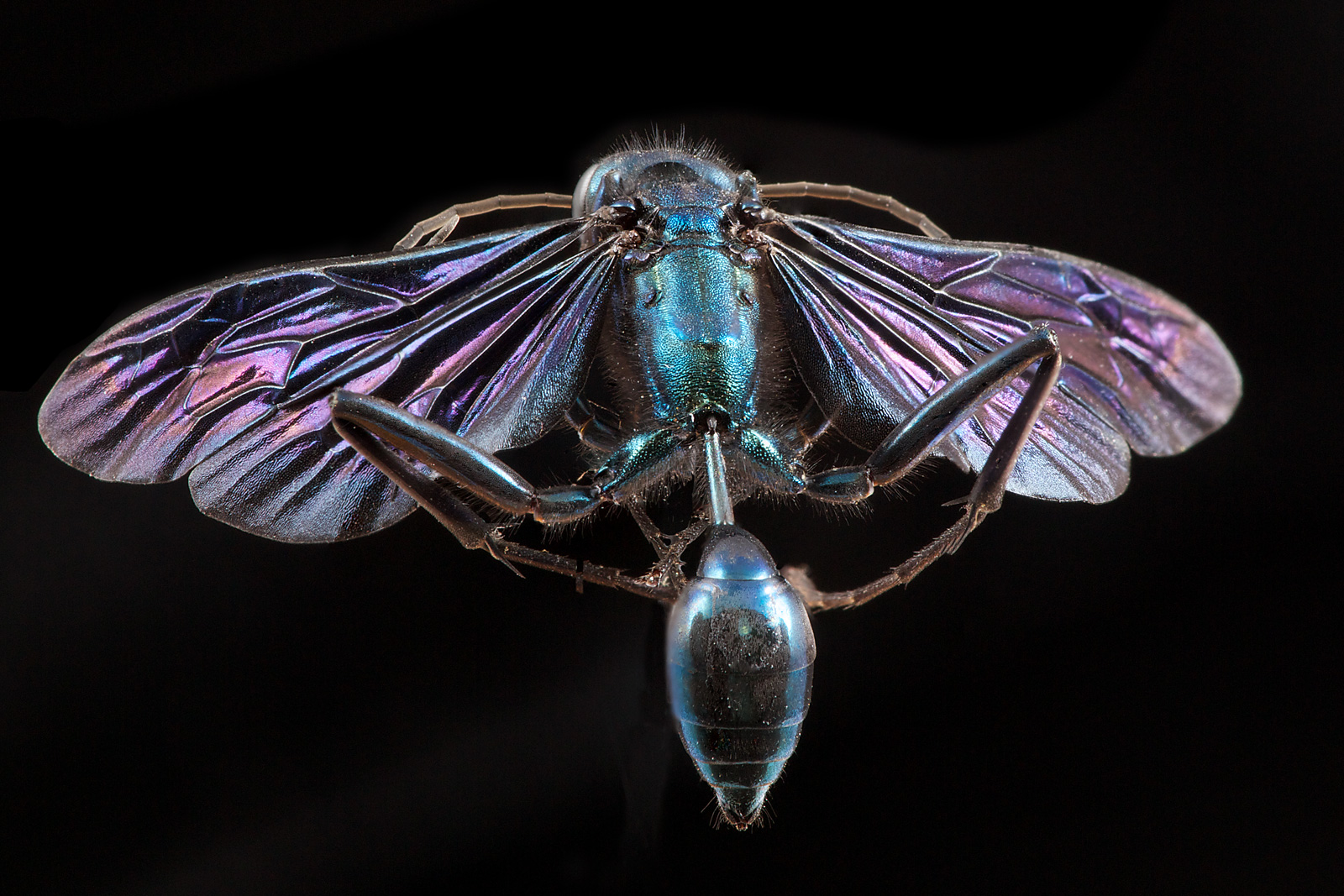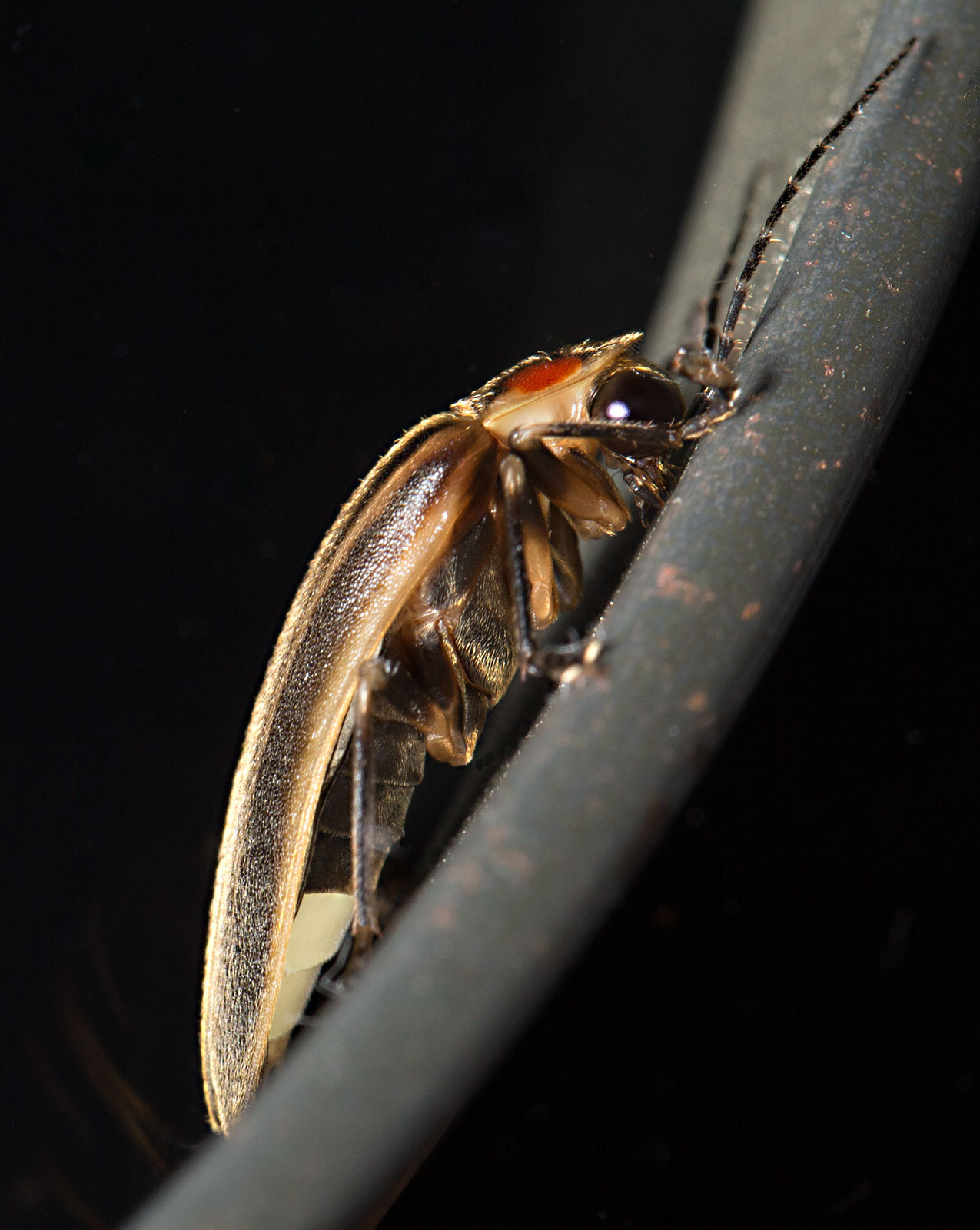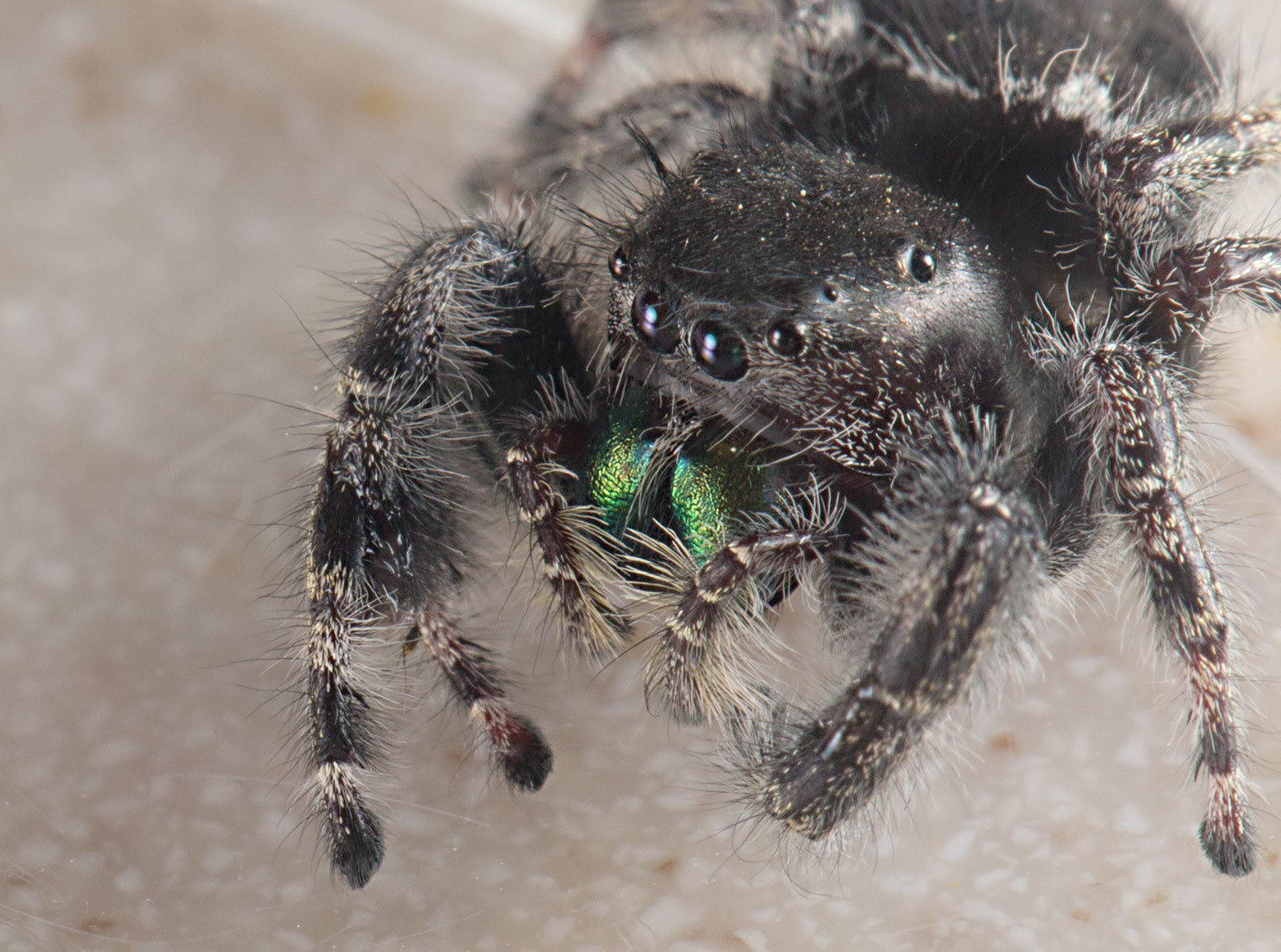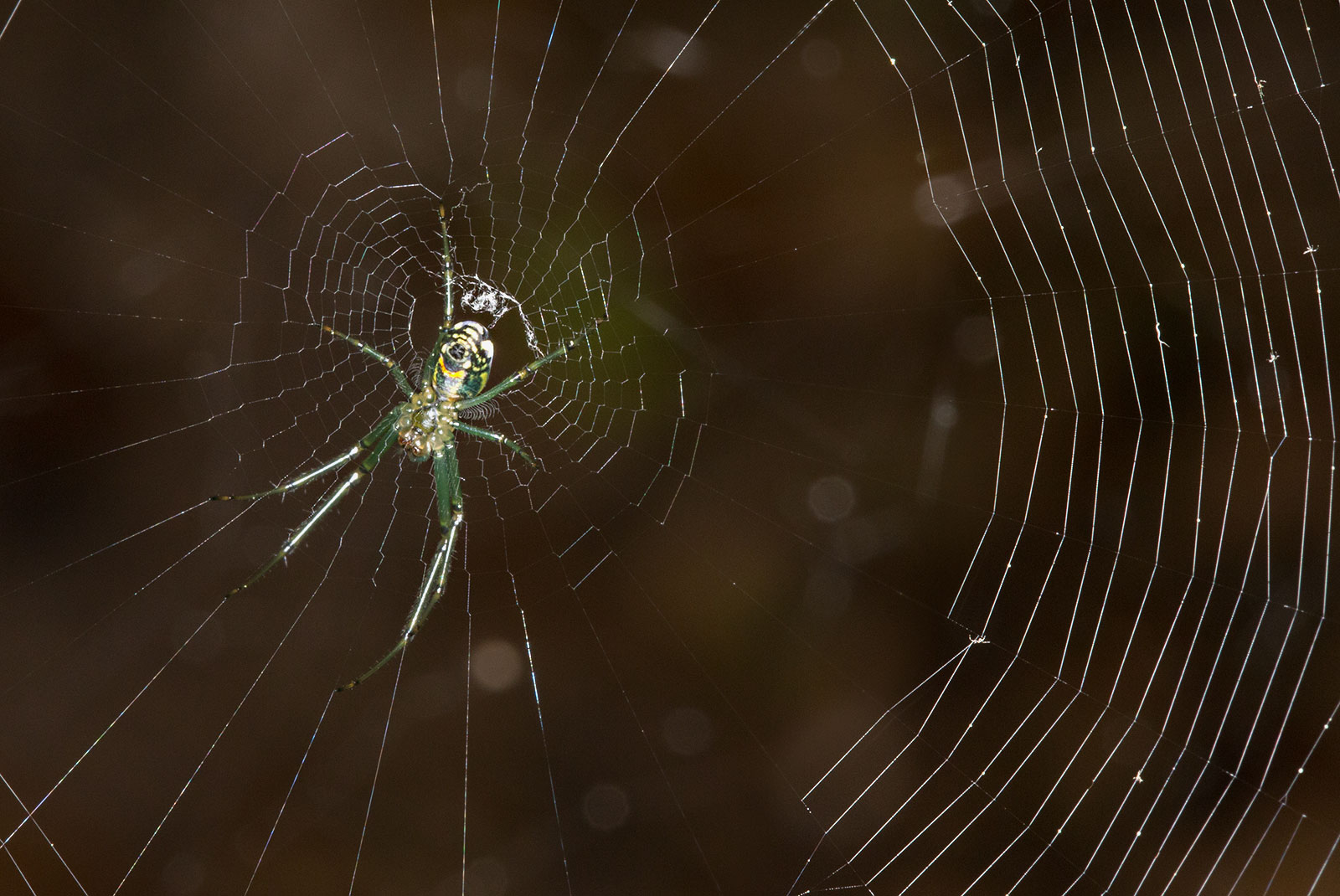
Mecynogea lemniscata, Basilica Orb Weaver, ventral view. This beautiful and harmless (if you're not a tiny arthropod) spider likes to build its web inside open shrubbery (as opposed to dense shrubbery). In this case, it has strung its web between two holly bushes. That leaves the animal exposed to predators, but it is protected by being very small, <1cm from tip of hind leg to tip of front leg, and is nicely camouflaged when viewed at a distance. It also remains very still until prey is caught in its web, then it moves with amazing speed. Look at the web on the right side and notice the tiny bits of debris in the web. Each piece is the dried remains of a bit of prey that the spider has dispatched. Notice the bit of web that is shaped like a church steeple at the 4:00 position. The top part was a rectangle like the other segments until a small arthropod became trapped and struggled to escape. The struggle resulted in the twisting of the web, more firmly entangling the prey. This animal is extremely sensitive to motion in the web, and seems to be able to distinguish between wind, which moves the entire web more-or-less uniformly, and localized motion as when prey is struggling to escape. Note the fine cilia on the animal's hindmost legs. They assist in detecting motion of the web. There is a second web of this species behind this one, visible in the out-of-focus circles and lines. The following photo shows the occupant of that web. Canon 5D Mark III, Canon 100mm macro lens, Canon Macro Ring Lite. May 29, 2013. |
